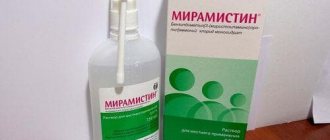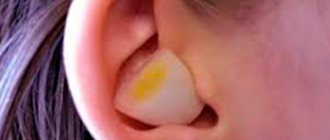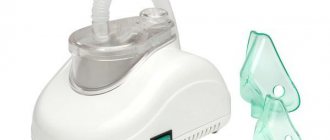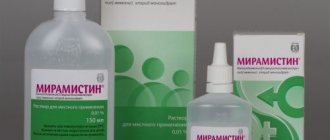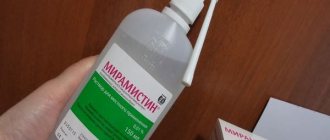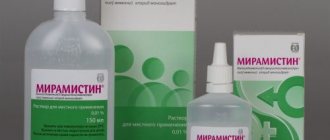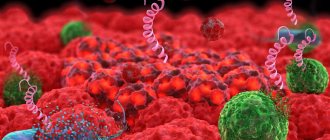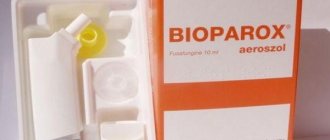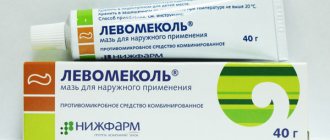Miramistin for sinusitis: how to use rinsing to treat the nose
Miramistin is a drug from the group of antiseptics.
It is a light, transparent liquid in a plastic tube with a special sprayer for irrigating the nasal cavity. This is an antimicrobial agent created to destroy pathogenic bacteria, viruses and fungi. It increases cellular immunity by affecting phagocytes. The shell of the foreign cell becomes thinner, after which it is completely destroyed. This leads to the death of the bacterium. The drug is often used for sinusitis. Miramistin has proven itself in ENT practice. It can affect bacteria that have lost sensitivity to antibiotics. This is due to the novelty of the drug.
https://youtu.be/https://www.youtube.com/watch?v=frM7kAim1qI
_
Does Miramistin help treat sinusitis, how does the medicine for rinsing the nose work?
It affects the source of inflammation of the maxillary sinus, entering it through the nasal passage. It destroys microbial cells and increases cellular immunity of the mucous membrane. Does not enter the bloodstream, acts locally.
A distinctive feature of an antiseptic is its adsorbing properties. It helps clear the nasal cavity of pus in the case of purulent sinusitis.
Composition and active substance
The solution is active against a large number of known bacteria. The active substance is benzyldimethyl-3-myristoylamino-propyl ammonium chloride monohydrate. Purified water acts as an auxiliary substance. Due to this, it has a transparent color and does not have a characteristic odor.
Available in containers from 50 to 150 ml.
How and for what forms of disease to use for flushing
The dosage and frequency of nasal rinsing depends on the stage of the disease. For mild cases of the disease, it can be used as monotherapy. In difficult cases, it will have an auxiliary effect, acting as an addition to the main manipulations.
For catarrhal sinusitis, the remedy can relieve swelling of the mucous membrane, eliminating its cause. In case of a purulent course of the disease, it can act as an adsorbent (rejecting the purulent contents of the maxillary sinuses).
Methods of use to eliminate sinusitis:
- Irrigation of the nasal passages. Used before any manipulation, acts as an antiseptic.
- Sanitation before and after surgery. The medicine helps the patient undergo surgery more easily and promotes rapid tissue healing.
- Inhalations with a solution help steam penetrate the site of inflammation to destroy pathogenic bacteria.
The dosage and duration of therapy is determined only by the attending physician.
Methods of application
How to use Miramistin for sinusitis? There are several options for administering the drug into the nose - rinsing, irrigation, sanitation, inhalation.
Nasal rinsing
How to rinse your nose with Miramistin for sinusitis? At home, a syringe or a small teapot is used for this.
First you need to clear your nasal passages. If the congestion is severe, you can drop Naphthyzin into your nose and wait until the swelling disappears.
Miramistin is taken into a syringe or kettle, bent over the sink and, tilting your head to one side, pour the solution into the nostril located above. The liquid should flow freely through the second nasal passage. The procedure is then repeated for the opposite side.
There may be a slight burning sensation, which soon goes away. For children, the solution is pre-diluted with warm water 1:1.
The frequency of washing is 3 times a day. Treatment is continued for a week. In a hospital setting, the “Cuckoo” procedure is performed to increase efficiency.
Inhalations
For inhalation you will need a nebulizer. The amount of solution for an adult is 5-7 ml, for a child – 3 ml. For children under 12 years of age, the drug is diluted with saline in equal parts.
Instructions for using Miramistin for sinusitis in the form of inhalations:
- Clear your nasal passages.
- Pour the solution into the device and turn it on.
- Bring the mask to your face and breathe for 5-15 minutes (inhale through your nose, exhale through your mouth). Breathing should be calm.
Inhalations are carried out three times a day, the duration of treatment is from 7 to 15 days. After the procedure, you must refrain from eating and drinking for half an hour.
Irrigation
Irrigation allows you to disinfect the mucous membrane of the nasal passages. This procedure cannot get rid of pus accumulated in the maxillary sinuses, but as part of a comprehensive treatment it improves the patient’s condition.
For this purpose, Miramistin for sinusitis is injected into the nose using the nozzle included in the kit. Before irrigation, you should clear your nasal passages and take a horizontal position with your head thrown back.
The nozzle is inserted into each nostril one by one and the drug is sprayed. After irrigation, you need to lie down for another 3-5 minutes.
Sanitation
How to use Miramistin for sinusitis for sanitation is determined by the doctor, since this procedure follows surgery. Having punctured the maxillary sinus, he uses a special syringe to inject about 10 ml of antiseptic into it.
The use of Miramistin at this stage of treatment accelerates recovery. To eliminate the purulent process, 2-5 sanitation procedures are sufficient.
Treatment of sinusitis with Miramistin gives positive results and allows one to avoid puncture in the initial stages of the disease. But for a lasting recovery, supervision by the attending physician is necessary. Trying to get rid of sinusitis on your own can have fatal consequences.
Author: Yana Semich, especially for lechim-gorlo.ru
How to properly use the remedy for sinusitis: dosage for adults and detailed instructions
Before use, you must visit an otolaryngologist who will prescribe the method of treatment and the correct dosage. It depends on the stage and course of the adult’s disease.
The drug is sprayed into the nasal passages or inhaled in a vapor state (using a nebulizer). Inhalations are carried out 2 or 3 times a day, mixing the antiseptic with saline. solution in a ratio of 1/2. Nasal irrigation – 2 times a day (using a spray cap).
How to properly apply and rinse your nose? Instructions for attaching the nebulizer (included with the medicine bottle):
- Remove the bottle from the box
- They take out the cap.
- Remove the cap from the bottle and put on the sprayer.
- Press the spray to check the cap.
With one press, 3 to 5 ml of solution comes out.
How to properly use and rinse your nose to treat sinusitis
To properly rinse your nose, you need to perform a number of steps:
- take a horizontal position;
- the head is slightly thrown back;
- put a tip on the bottle with the solution and insert its tip into the nasal passage;
- spray antiseptic;
- wait in this position for 4 minutes.
To relieve swelling of the mucous membrane, you should first drip a vasoconstrictor into the nose.
The same method can be used in a standing position. In this case, the head is tilted to the side, held over the sink.
How often and how many times a day
Nasal rinsing is carried out 2 times a day. It is best to carry out this procedure immediately after waking up and after getting ready for bed in the evening. Adults sanitize the nasal passages with the solution, spraying 3 to 5 ml into each of them.
Inhalations with Miramistin
Inhalations are carried out using a nebulizer. In this case, the substance turns into an aerosol and penetrates deeply into the maxillary sinuses when inhaled.
To do this you need to do the following:
- Miramistin is mixed with saline. solution in a ratio of 1:2.
- Pour the resulting mixture into the container of the apparatus.
- Turn on the nebulizer, put on a mask and take deep breaths through your nose and exhale through your mouth.
- Continue inhaling for 5 minutes.
- The procedure is repeated 3 times a day.
In rare cases, four inhalations are prescribed.
Nasal irrigation technique - how to rinse the sinuses
Nasal irrigation for sinusitis is carried out 2-4 times a day using a cap nozzle. Miramistin is sprayed into each nostril at intervals of 6-12 hours.
To relieve nasal congestion, vasoconstrictor drops are first instilled into the nose.
Application of sanitation techniques
Sanitation is carried out only in a hospital setting. This method involves introducing the drug into the cavity of the maxillary sinuses after surgical procedures:
- 10-15 ml of solution is poured through the hole made and pumped out.
- repeat the action 2 times a day for a week.
How many days does drug therapy last?
The duration of therapy is selected by the otolaryngologist. It is based on the severity of the disease and its form. In mild cases, therapy lasts from 5 to 7 days. In severe conditions it lasts up to 2 weeks.
How to use
Miramistin is effective not only for a runny nose: it is widely used in dentistry, gynecology, venereology, surgery and, of course, pediatrics. The drug is used both for the treatment and prevention of colds, acute respiratory infections, ARVI and influenza, and when prescribed in combination with antibacterial agents it can enhance their effect. The only drawback of the medicine is a possible allergic reaction to its use, so treatment with this drug should be carried out under the supervision of a doctor.
Miramistin comes with a special spray nozzle, which simplifies the process of administering the medication into the nasal passages. There should be no problems with using miramistin for a runny nose in children. Although small children under 1 year of age cannot be injected with the drug. To eliminate unpleasant consequences, it should be instilled into the nasal passages, 2 drops 3 times a day. You can simply rinse your sinuses with a small amount of the drug twice a day. When Miramistin gets on the mucous surface of the nose, it creates a protective film on it. It is not absorbed internally and does not have a negative effect on the body; on the contrary, thanks to its use, the protective properties of the mucous membranes are only enhanced.
Contraindications and side effects
The antiseptic has virtually no contraindications (with the exception of individual intolerance to the drug, which causes allergic reactions).
Side effects include a rare burning sensation in the area of inflammation. It goes away on its own within 10-20 seconds and does not require special treatment.
If an allergic reaction occurs, the use of the antimicrobial drug is discontinued. Allergies are treated with antihistamines.
Treatment of sinusitis during pregnancy and breastfeeding is selected only by the attending physician and is used in cases where the benefit outweighs the risk.
Advantages of drug treatment, price and analogues
It has a number of advantages over existing analogues:
- activity against not only bacteria and viruses, but also fungi,
- adsorbing and immunostimulating functions of the solution,
- impact on microorganisms resistant to antibacterial therapy.
The price range of the drug varies from 360 to 400 rubles (for the release form with a 150 ml spray).
- Septomerin is a product with the active substance benzyldimethyl-3-myristoylamino-propyl ammonium chloride monohydrate. Available without a sprayer in a volume of 100 ml. The cost varies from 260 to 300 rubles. The absence of a cap and a smaller volume of the drug gives Miramistin an advantage.
- Okomistin - the composition of the medicinal solution is completely identical to the composition of Miramistin. The cost of 1 bottle of 10 ml is 150 rubles. The bottle does not have a dispenser to spray the medicine. The small volume makes it more suitable for ophthalmic problems.
- Chlorhexidine is an antiseptic with a completely different composition. Despite its low cost (20 rubles), it competes with Miramistin. This is due to incorrect information to patients. Chlorhexidine is not active against fungi or viruses, it does not affect humoral immunity, and serves as a local antiseptic for external areas.
For the treatment of sinusitis, it is better to choose Miramistin with a special spray cap. With its help, the medicine is sprayed specifically onto the inflamed area. Nasonex nasal spray has also proven itself to be effective.
How to use Miramistin for sinusitis
Sinusitis is an inflammation of the maxillary sinuses.
The disease is familiar and common to many. More often it occurs of a viral or bacterial nature and accounts for one third of ENT diseases. It is characterized by a chronic type and multiple relapses. Traditionally, antiseptics and antimicrobial agents are used for treatment and prevention. Miramistin for sinusitis has established itself as a proven and reliable assistant.
In this article we will look at the use of Miramistin for sinusitis, recommendations and reviews.
Miramistin during pregnancy and lactation
The use of this pharmacological agent during any period of pregnancy and breastfeeding does not pose any danger to both the baby and the expectant mother. This is due to the fact that the active components of the medication are not absorbed into the blood, and therefore are not transported throughout the body to the placenta and mammary gland parenchyma.
Some obstetricians and gynecologists recommend that pregnant girls use Miramistin inhalations at the first manifestations of a cold, as this will help prevent the development of a respiratory disease, which, if severe, can affect the development and health of the fetus.
Despite the proven effectiveness and safety of the described medication, before starting its use you should consult with an otolaryngologist. Also, during pregnancy, you need to be especially careful about the dosage of the pharmacological agent and in no case exceed the concentration prescribed by the doctor.
Miramistin for sinusitis in the nose: instructions for use
Miramistin is an antiseptic and has a therapeutic effect at any stage of inflammation. The drug is produced in the form of a solution, in a 150 ml plastic bottle, with a nozzle for irrigating the mouth and nasal passages. It was developed in the 1980s for astronauts to protect them from bacteria, viruses and microbes in space.
The mechanism of action of the drug is that the active substance destroys the cells of pathogenic microorganisms, which leads to their death. Helps with purulent sinusitis. At the same time kills bacteria, viruses and fungi, as well as their combinations. At the same time, it promotes the production of interferon, acting as a local immunostimulant. This property makes Miramistin effective for chronic sinusitis with relapses.
Many antiseptics are toxic and prohibited for use in childhood, pregnancy and breastfeeding. Miramistin has no side effects or contraindications, except for individual intolerance, it is approved for use in children under one year of age.
Medicinal properties of Miramistin:
- antiseptic;
- local immunostimulant.
In order for the drug to show its therapeutic effect, you need to know how to use Miramistin for sinusitis correctly.
Miramistin for sinusitis: how to use spray and nasal drops, action, reviews, instructions, analogues
Miramistin is a domestically produced medicine that is classified as an analogue of Chlorhexidine. It effectively copes with bacteria, fungi and viruses. Various flora that live in the nasal cavity are sensitive to it. It is also active against resistant hospital strains.
The peculiarity of the drug is that its components do not penetrate the systemic bloodstream. Thus, you don’t have to worry about side effects, because they are simply absent. This guarantees the high safety of the therapy. The drug is presented in the form of a solution. And it can be used in the treatment of sinusitis by pregnant and breastfeeding women, as well as small children.
If Miramistin is combined with systemic antibiotics (in tablets or injections), a person’s recovery occurs faster. During the period of use of the drug, you can and should use other medications. The only restriction is on alcohol, as it reduces the effectiveness of antibacterial agents.
The action of Miramistin is predominantly antiseptic. The product has hydrophobic properties, due to which it increases the permeability of cell membranes of pathogenic microbes. The classic effect of using an ointment or solution is the destruction of cell walls and membranes. The action of Miramistin applies to all types of bacteria:
- gram-positive;
- gram negative;
- aerobic;
- anaerobic;
- spore-forming;
- asporogenous.
It is also effective against antibiotic-resistant microorganisms. Destroys monocultures and associations. It is especially good at destroying staphylococci and streptococci and other gram-positive bacteria. In addition, it is used to combat pathogens of sexually transmitted diseases: chlamydia, Treponema Pallidum, Trichomonas, gonococci, etc.
This effective remedy perfectly destroys fungi. Copes with dermatophytes, ascomycetes and yeast-like fungi. Another effect of Miramistin ointment or solution is antiviral.
For any infectious disease, treatment with this medicine increases immunity and enhances the body's response to infection. The resistance of pathogens to antimicrobial drugs is decreasing. The processes of regeneration of affected tissues gradually begin. Miramistin is almost not absorbed into the blood.
Sinusitis is an unpleasant disease. It must be treated to avoid complications. Indeed, with advanced chronic inflammation of the nasal sinuses, surgical intervention is necessary. One of the treatment options is Miramistin. It is effective for sinusitis, including sinusitis.
Miramistin consists of water and the active ingredient of the same name - miramistin. The medicine is liquid. The solution is applied topically. Available in 50 ml bottles.
This drug exists in the form of an ointment with the same active substance. Sold in tubes of 15 g. Like the solution, it is used externally.
Is it possible to rinse your nose with Miramistin for sinusitis?
The medicine is used for inhalation, rinsing, and instillation. Often, as a treatment, the nasal sinuses are washed with a solution of the drug. Is it possible to rinse your nose with Miramistin for sinusitis? The opinion of doctors on this issue is clearly positive.
Sometimes washing with Miramistin for sinusitis helps the patient avoid surgical intervention. This is especially effective in the first days of the disease. It relieves swelling of the mucous membrane and clears the sinuses of pus.
For a runny nose, instill 2 drops of Miramistin solution into each nasal passage twice a day. In case of purulent sinusitis, it is necessary to rinse the maxillary sinus with Miramistin in large quantities. Miramistin for sinusitis is instilled into the nose after a puncture in the hospital. Miramistin is used to prevent sinusitis in the form of nasal drops or inhalation.
The action of the product is to destroy pathogens in the nasal and oral cavities. If the disease is not treated in time, it will spread deeper and cause complications. Miramistin strengthens local immunity and helps restore the nasal mucosa.
Miramistin for sinusitis: how to use spray and nasal drops, action, reviews, instructions, analogues
- Marina, 32 years old: “I have a chronic form of sinusitis, so it worsens 3-4 times a year. I already know what to do, so I don’t go to the doctor every time. Washing my nasal passages with Miramistin helps me a lot. I make it at home myself. To do this, I lie down and tilt my head back. I pour the required amount of solution into the nasal passage, and then wait 3-4 minutes. After such manipulation, pus and mucus begin to actively come out. The result of the procedure is easier breathing and quick recovery.”
- Igor, 43 years old: “I used Miramistin in the treatment of sinusitis, but all the procedures were performed in hospitals using the cuckoo method. Of course, it’s impossible to call the manipulation pleasant. But it is very effective, since I managed to cure the pathological process in 12 days. And all this is thanks to the effectiveness of Miramistin. It quickly stops inflammation, neutralizing pathogenic microflora, which became the cause of the development of the pathological process. In addition, its use made it easier to breathe and improve the sense of smell.”
- Svetlana, 24 years old: “When my son was diagnosed with sinusitis, the doctor prescribed us a lot of medications, among which was Miramistin. But we only used it not for rinsing, but for inhalation. The child spent them with pleasure, which cannot be said about washing. Breathe in pairs for 10 minutes every day. After that, I saw how the baby stopped whining and his breathing became easier. Of course, all these reliefs are the result of complex treatment, but one cannot fail to note the benefits of Miramistin. Now this drug will always be in our home medicine cabinet, as the most effective remedy for the treatment of sinusitis.”
Miramistin is a drug that is actively prescribed for the treatment of sinusitis of various forms and for people of any age. Thanks to him, it became possible to cure the pathological process even in pregnant and lactating mothers. Only a doctor should determine the dosage of drugs and the method of use after diagnosis. Follow the link to read more about inhalations with saline solution.
After reading this publication, you will learn how to use Miramistin for sinusitis in the nose. Reviews from people published at the end will explain how to properly rinse the sinuses so that the treatment is as effective as possible.
One of the effective methods of therapy for sinusitis in outpatient and home settings is nasal lavage. This operation helps relieve swelling of the mucous membrane, liquefy and cleanse purulent accumulations in the nasal sinuses.
One of the modern and promising antiseptics from the group of cationic surfactants is Miramistin, which helps in the treatment and prevention of infectious diseases. It effectively gets rid of harmful bacteria and viruses during sinusitis in a minimum time.
Miramistin is produced in the form of a transparent, odorless solution that foams when shaken.
Its main advantages are:
- maximum convenience of administering the solution into the nose;
- simplicity of the procedure;
- not absorbed into the blood system;
- safety of use;
- minimum number of contraindications.
The advantages of the drug allow it to be used by both children and pregnant and lactating women. If the treatment of sinusitis with Miramistin is supplemented with other medications, then it will be possible to get rid of the disease in a few days.
Miramistin for sinusitis in the nose has a wide spectrum of action. It destroys the active substances of cells of harmful microbes and kills pathogenic bacteria and viruses. This antiseptic solution can be used in several ways, according to the attached instructions.
| Methods | How to use |
| Inhalations | Fill the nebulizer with undiluted Miramistin solution and carry out the procedure 3 times a day for 10–15 minutes. |
| Washing |
|
| Burying | 2 drops of solution into each nasal passage twice a day. |
To rinse your nose yourself you need:
- lie on your back with your head thrown back;
- insert the spray nozzle and press into each nostril;
- After this, remain in a lying position for a few more minutes.
Nose treatment
When choosing the most effective therapy for sinusitis, many are guided by the reviews and recommendations of doctors. The use of Miramistin is very popular due to its effectiveness and low risk of allergic reactions.
The product helps restore mucous membranes and also remarkably strengthens the immune system. The spray is mainly used for rinsing the nose, but using an ultrasonic nebulizer brings very good results.
- If they begin to treat the disease on time, then it will be possible to stop the pathological process, preventing it from progressing to the chronic stage.
- When performing inhalations with this medicine, you should follow the instructions for use and rely on the age and stage of the disease.
- Doctor's review
Reviews
Content
Inhalations with Miramistin for sinusitis
Many people use Miramistin spray for sinusitis. Not everyone knows how to use inhalation with it.
It is better to inhale Miramistin using an ultrasonic nebulizer. Other devices are not effective for it. Doctors believe that if you start treating the disease before it enters the stage of purulent sinusitis using inhalation, it can be stopped.
Time and rate of consumption of the drug during inhalation:
- The standard solution for a child is 3 ml.
- The norm of solution for an adult is 5-7 ml.
- For children under 12 years of age, dilute the medicine with saline in equal proportions.
- Inhalation time for children is 5-15 minutes.
- Procedure time for adults: 10-15 minutes
- Inhalation should be carried out 3 times a day
- Breathing technique during the procedure: inhale through the nose, exhale through the mouth.
- Before inhalation, it is advisable to clear your nose.
The action of Miramistin during inhalation is to destroy pathogenic organisms, it helps heal and restore the nasal mucosa and helps strengthen local immunity.
Knowing how to treat sinusitis with Miramistin, you can successfully fight relapses and cure chronic forms of the disease. Inhalations are allowed for children, pregnant and lactating women. The duration of treatment depends on age, stage of the disease and individual characteristics of the body.
Inhalations in the treatment of sinusitis with Miramistin are not the main, but only an additional method of therapy. Complex treatment is selected by the attending physician. With this method of treatment, remember about individual sensitivity to the drug; at the first sign of discomfort, you need to stop inhalation.
Inhalations with Miramistin for runny nose for children
Inhalation procedures with Miramistin are also very common in the treatment of bacterial rhinitis, but to carry out the procedure you will need an ultrasonic nebulizer. Miramistin - nebulizer inhalation for children with a runny nose should be used in its pure form. For one procedure you will need 1 - 2 ml of solution. The duration of inhalation is 5 – 10 minutes. The frequency of inhalation procedures is 2-3 times a day. It is important to remember that at temperatures above 37.2 degrees, inhalations are contraindicated.
Miramistin for sinusitis: reviews
If you are still wondering whether Miramistin helps with sinusitis, reviews on the Internet will give you a comprehensive answer to this question.
Use in adults
Reviews from patients show that Miramistin spray is effective in the treatment of chronic and acute sinusitis if it is started at the first signs of the disease. No less effective is washing the nasal sinuses with Miramistin solution using a special syringe.
Patients also note the low price of the drug and convenient packaging. Patients say that doctors often prescribe Miramistin for a runny nose, in order to prevent the development of sinusitis or at its initial stage.
Use in children
Mothers of children aged 3 to 12 years say that Miramistin helps children with nasal congestion well.
Among the disadvantages, it is sometimes noted that it causes burning and tingling in the child.
Parents who treated their child's runny nose using Miramistin inhalations talk about its rapid positive effect.
Inhalations with Miramistin for sinusitis are also characterized by parents of children as a reliable remedy.
Use during pregnancy and lactation
Young mothers who used Miramistin during pregnancy claim that the drug gave good results and did not affect the child’s health in any way. The use of Miramistin during lactation does not cause any complaints among nursing mothers. Rinsing with the solution helps relieve nasal congestion and does not cause side effects in infants.
How to properly rinse your nose with sinusitis, the procedure technology is shown in the following video.
Miramistin in the nose of a child: instructions for use
The instructions for use do not contain data allowing the use of Miramistin for children against a runny nose by irrigating the nasal cavity. Rinsing the maxillary sinus is possible only when performing a puncture in a patient with sinusitis. The drug is recommended from 3 years of age, the course of treatment is 4-10 days.
How to drip?
Despite the lack of relevant official recommendations, some parents drip Miramistin into the nose of children with a runny nose, as evidenced by their reviews. They claim that the drug is truly effective in treating children. How to drip for therapy:
- instilling the product in its pure form, 4 drops into each nostril (for 2 years and 1 year, 2 drops are enough; up to a year - 1 drop);
- You must repeat the procedure up to 5 times a day;
- Duration of use of the drug is no more than 10 days.
Miramistin should not be dripped into the nose of children for prevention.
How to rinse?
Washing with Miramistin should be carried out only if this procedure was prescribed by a pediatrician. When washing, follow these rules:
- you need to take a special syringe;
- lean over the sink;
- inject the drug into one nostril under pressure;
- carefully blow out any remaining medication from your nose;
- repeat with the other nostril.
The drug does not need to be diluted with water. The volume of liquid for rinsing depends on the age of the baby and ranges from 50 to 100 ml. The solution should partially exit through the second nostril. It is possible to pour the solution into the nostril using a rubber bulb. Then carefully squeeze the air out of the bulb and place its tip into the nasal cavity. When you open the pear, the mucus will be pulled in along with the air. You can also rinse using a syringe without a needle. It makes no sense to use it for congestion in children.
You can and should first drip a vasoconstrictor.
It is strictly forbidden to use the drug for washing the nasal cavity against a runny nose for children aged one to two years, despite reviews on the Internet.
